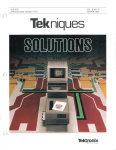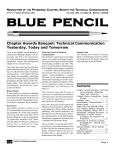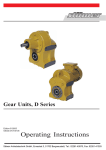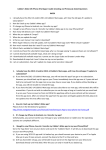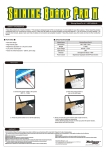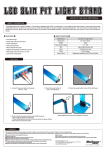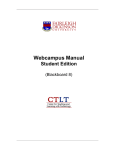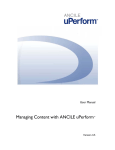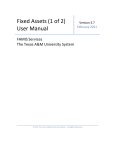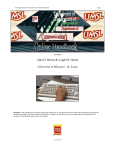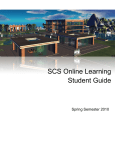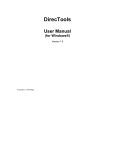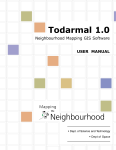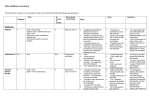Download Blackboard Workshop Helpful URLs
Transcript
GCU 102: INTRODUCTION TO HUMAN GEOGRAPHY Spring Semester, 2013. Schedule Line No. 13094 Professor: Dr. Michael Kuby, Professor School of Geographical Sciences COOR 5568, Phone: 965-6850 http://geoplan.asu.edu/kuby Email: Use Blackboard Send Email Function (I find that if students email from their email accounts to [email protected], it often winds up in my spam folder, which I don’t check as often as my inbox) Prof. Office Hours: Tuesdays 2:00 – 3:30 PM Fridays 11:00 AM -noon or by appointment Teaching Assistant: Bo-Gyeong Min By appointment Email: [email protected] Required E-Book: Michael Kuby, John Harner, and Patricia Gober. Human Geography in Action, 5th edition. New York: John Wiley & Sons, 2010. Human Geography in Action is an online textbook and lab manual using the WileyPlus platform. You should not buy a hard copy of the book, and if you already have one you still need to buy a registration code. You should buy the online registration code for $49.50, which will give you the complete e-book with color graphics and online activities linked to our particular class section, at almost half price of the the black-and-white hard copy price of $92!),. Please follow my instructions carefully. A two-minute step-by-step tutorial of the registration process can be viewed at: www.wiley.com/college/twomin/stu/register.html. The main steps are summarized in the How to Purchase the Online Book and Activities, listed in the Blackboard site under Course Documents & Quizzes. IMPORTANT: The WileyPlus website will automatically grade your assignments and record your scores in a gradebook. Each individual student must therefore pay and register individually for our particular course website in order to get credited for completing the assignments on WileyPlus. You cannot share registration codes. Please read this entire syllabus carefully. Because this is an online course, it is even more important than usual for you to know the rules, expectations, and schedule for the course. I cannot emphasize strongly enough how important it will be for you to know the rules, be organized, and meet the deadlines. 1. Course goals and objectives This course is one of the required introductory courses for geography majors, as well as a General Studies course satisfying both the “Social and Behavioral Sciences” (SB) and “Global Awareness” (G) requirements. It is designed for all of these groups of students, or as an elective. Geography literally means “description of the earth,” and we use maps to describe what is where on the surface of the earth. At the college level, however, geography’s main purpose is to explain the processes that lie behind the maps, or explain the implications of the maps. Geography can thus be defined as the study of how and why things differ from place to place on the surface of the earth. Human geographers study the geographic patterns of 1 human society—political, cultural, economic, and social activities—and the processes driving them. Basically, human geographers study the same kinds of things that other social scientists study, but with a focus on where things happen. An economic geographer might study transportation patterns and where different industries are located while a cultural geographer might study the spread of religions or the geographic distribution of cultural traits. A political geographer, on the other hand, would be interested in voting patterns or where wars break out. This course is organized by type of human activity (cultural, population, economic, political, etc.), but uses case studies from around the world, making it ideal for both SB and G credit. The School of Geographical Sciences offers two other 100-level geography courses. One is GPH 111, Introduction to Physical Geography, which is a lab science course focused on the natural world. The other is GCU 121, World Regional Geography, which is organized by region of the world and systematically covers the physical and human geography of the major world regions. Geography is always in the news. Products, diseases, migrants, food, pollution, and terrorism from other countries increasingly affect the lives of ordinary Americans. The American public has become painfully aware that not only do we need to know about other places, but also that we know less about the world than people in most other rich countries and even some poor ones. I hope you will find this course relevant to your daily life and current events. 2. Nature of this Online Class and Expectations The course is built around a book/website of hands-on activities developed here at ASU but available through our publisher’s website called WileyPlus. The book, Human Geography in Action, is a hands-on, activity-based approach—“learning by doing.” The usual structure of a college course will be turned on its head. Instead of activities being used to supplement the readings, the readings will mainly introduce what is needed to do the activities. Each activity focuses on one of the core subfields of human geography, and illustrates them through a real-world example. Instead of trying to comprehensively (and superficially) cover the entire breadth of human geography, our goal is to learn a few really important topics, and learn them in depth. In addition to geographical knowledge, you will also learn about the kinds of research questions geographers ask and how they go about answering those questions. This will not only give you more general insight into how social and behavioral sciences are done, but also give you some in-depth experience with important issues in the US and around the world. Let’s get one thing straight before starting. If you are taking this online course because you think it’s easier than a “real” course, think again! True, this course does have less reading than your average course, and it has no in-class meetings, and no final exam. But you will have two online assignments every two weeks that will take 1-5 hours each. Some will involve you leaving your house and going to a store or walking around a neighborhood making observations. You will calculate data on spreadsheets, make and interpret maps, read newspaper articles, analyze satellite imagery, find census data and compare it to a field study of a neighborhood, and debate with your classmates. There will be a quiz every two weeks. You will need to be self-motivated and organized and stay on top of things. We will move fast through a lot of material. There are no prerequisites for this course in terms of having to know how to use advanced software. The activities will give you the “feel” for using geographic information systems (GIS), spreadsheets (like 2 Excel), remote sensing of satellite images, and computer simulation, but you don’t need any prior experience in any of these kinds of software. Human geographers do use math for certain kinds of analyses, and we introduce you to some of these applications in this course. There is no calculus required, but you will encounter log-log graphs and summation signs in a few chapters. I like to think we’ve made this math very clear and simple in our book. 3. Online Platforms The course will use two different platforms because certain features are available only on one or the other but not both. Here’s the main breakdown: ASU Blackboard GCU 102 Site View opening lecture (course introduction only) View narrated PowerPoints for each chapter Access discussion board for debate (Chapter 11 only) Prepare for and take quizzes Check quiz grades and weighted average WileyPlus GCU 102 Site Read the chapters Do all online assignments (except Chapter 11 debates) Prepare for quizzes with Wiley Plus resources (web links, flash cards, 3-D globe, data, map quiz) View your assignment grades 4. Bi-Weekly Routine (2-Week Blocks) The course is divided into seven 2-week blocks. Each block will consist of two chapters; two sets of assignments; and one quiz covering both chapters. You will have a 2-week window, from Monday at 1 AM to the following Sunday at 11 PM to complete the assignments and quiz. Try to follow the same routine for each 2-week block. 1. To start each week, read the chapter’s Introduction online in the book on WileyPlus. The introduction introduces you to some of the most important core concepts in this subfield of human geography. It provides the theoretical background and introduces the key terms and diagrams. You get to it in WileyPlus by clicking on the Read, Study, and Practice tab and then choosing the chapter and, under Reading Content, you will see a link to Introduction. 2. Also go over the goals and expected learning outcomes of the chapter. These tell you what you will learn to do by reading the chapter and doing the hands-on assignments. To find these, just read on after the Introduction, within the same link. 3. Next read the Case Study section, which will provide the background information necessary for the particular case study that you will investigate in the online assignments. The idea here is that the theoretical concepts explained in the introduction could be applied anywhere in the world, but our hands-on activities will focus on one particularly relevant case study. So, for instance, we use AIDS as our case study of spatial diffusion, and India as our case study of population dynamics. The Case Study sections will give you historical and geographic background to these case studies. The Case Study can be found in WileyPlus under the Read, Study, and Practice tab, or via a button at the bottom of every question. 3 4. Next, view my Flash Animation narrated PowerPoint on our Blackboard site (sometimes called a “Breeze Lecture”). These lectures range from 20 minutes to an hour. They are optional but recommended. You can skip some slides if you feel you already understand it. Some students learn better by listening than by reading. They will cover the main concepts with many more graphics than in the book, and give you tips for success and important warnings about the assignments for the week. Occasionally I will add new material not in the book. The PowerPoints can be found on the Blackboard site under Course Documents & Quizzes. Each chapter’s lecture is divided into two parts. 5. Before you start the assignment in WileyPlus, check for any recent emails from us to see if there are any pointers or warnings pertaining to this chapter. 6. Now you are ready to do the online assignments on WileyPlus. Click on the Assignment tab in WileyPlus and look for the assignments for the chapter. Do the assignments in the correct order, starting with Activity 1, because in some chapters the activities build on each other sequentially. How to do it should be fairly intuitive if you look around at the buttons and links, but here are some basic instructions: o Click on the desired assignment. o Click on the first question in the left margin. o Read the instructions, if any. o Click on Link to Animation to do the activity as instructed. o Click on Link to Text to re-read related parts of the book. o Answer the question. Most questions will be objective, but occasionally we will assign an open-ended written question, in which case please write in complete sentences and justify your answer (that is, explain why). Written questions will not immediately get scored in the gradebook. We will grade them at a later time. o You must click Submit to officially answer the question. As soon as you do, your points, if any, will be recorded in the Gradebook. o Generally, you will be allowed at least three attempts at each question, but some assignments will allow more attempts than others. Make sure you know how many attempts are allowed (it will tell you at the start of the assignment). o Click on the Hint if there is one. Sometimes the hint may only appear after a wrong attempt. o Click on the next assigned question, or just click next. o If you are interrupted or lose Internet service, you may return at any time before the deadline to answer the remaining questions that you have not yet submitted. There is no time limit for doing the WileyPlus assignments other than the following. o You will have a 2-week window to complete the assignments (and quiz) for each 2chapter unit. You may start an assignment as early as Monday morning at 1AM, and must complete each assignment by the following Sunday at 11PM. No late assignments are permitted. For some chapters we won’t do all assignments that are in the book. See the schedule in the syllabus. Also, in some weeks the assignment will involve leaving your computer (the horror!) and venturing into the real world to do something. In particular: o For Chapter 2 you will have to go to a store that sell postcards to do a little research. o For Ch. 10 you will need to learn how to use the Census website, and will have to take a field trip on your own to a neighborhood. 7. After completing an assignment, always check the WileyPlus gradebook to see if your score has been automatically recorded. Every other week (beginning in Week 5) we will transfer these WileyPlus grades into the Blackboard gradebook, where they will be weighted and combined with your quiz grades. 4 8. We encourage you to check out some of the web resources for each chapter. These are interesting web sites with cool animations or controversial materials relating to the core concepts or the case study. You can find them under the Read, Study, and Practice tab. Other web sites that we have identified since the book was published, or that pertain mainly to Arizona, can be found in the chapter folders in Course Documents & Quizzes in the Blackboard site. 9. Every other week, you should study for the quiz by looking over the key terms and the graphics in WileyPlus before taking the test. Make sure you know the definitions and can think of an example of each term in the real world. Quizzes will include questions about the activities, so review the online activities by going to Read, Study, and Practice in WileyPlus and clicking on Computerized Chapter Activities. Here you can look at the animations again without answering all of the questions. You can also practice your terms and definitions using the Flash Cards in the Read, Study, and Practice section. Though not directly on the quizzes, you may find the other resources there interesting, such as the 3-D globe (requires Shockwave), the map quiz for learning where places are, and the Area and Demographic Data to look up economic and demographic facts about countries around the world. 10. Once every two weeks you will take an online quiz that covers the previous two chapters. Quizzes can be found in the Blackboard site under Course Documents & Quizzes. Quizzes will be timed and consist of randomized objective questions. The time window for completing quizzes is the same as the 2-week window for the related assignments: from Monday at 1 AM to the following Sunday at 11 PM. 11. After completing the quiz, always check the Blackboard gradebook to make sure the quiz was successfully submitted. If the grade is not recorded for some reason, you will have to email Dr. Kuby to reset your quiz. You are allowed only 3 quiz resets over the semester (for more information on the reset policy, see the section on Quizzes below). 5. Weekly Schedule and Exceptions We will cover all the chapters in the book in numerical order, in 2-week blocks, with a few exceptions: 1. At the start of the semester, you also must complete Assignment Zero in WileyPlus and the Syllabus Quiz in Blackboard. 2. You will have an entire 2-week block plus an extra week on Chapter 11 and we will skip Chapter 12. a. In Week 11 you will individually do the first two assignments in WileyPlus, which will be due at the end of the first week. b. Starting in Week 12 we will have a multi-part debate on urban sprawl in Blackboard, with 4 days for each part (your timely participation will be worth 50 points each). Assignments 1 and 2 will count as one chapter’s worth for your grade, and the debate will count as a second chapter’s worth, and the quiz on Ch. 11 alone will count as a normal quiz on 2 chapters. c. You will get a 10-day window for the Ch. 11 quiz, which will overlap into the first week of the Chapter 13-14 time block. 3. Finally, you will then have the rest of the semester through Reading Day (May 1) to finish Chapters 13 and 14. This is a 3½-week window of time and it includes 1 week of overlap with Ch. 11 to finish the Ch. 11 quiz. Still, if you are so inclined, you can finish this course before Thanksgiving! No deadlines will be extended ever, except in the case of major WileyPlus or Blackboard system outages on the evening of the final deadline. 5 Week Wks. 1 -2 Jan. 7 – Jan. 20 Jan. 13 Wks. 3-4 Jan. 21 – Feb. 3 Wks. 5-6 Feb. 4 – Feb. 17 Wks. 7-8 Feb. 18 – Mar. 3 Wks. 9-10 Mar. 4 – Mar. 24 Mar. 31 Wk.11-12 Mar. 25 – Apr. 14 (1 extra week) Wk. 13-15 Apr. 8 – May 1 (1.5 extra weeks) Topic Course Introduction True Maps, False Impressions: Making, Manipulating, and Interpreting Maps Read Ch. 1 Assignments - Buy WileyPlus registration code. - Do Assignment ZERO (familiarizes you with WileyPlus and counts toward your grade) - Take syllabus quiz - Do Assignments 1 and 2 Layers of Tradition: Culture Regions Ch. 2 - Assignment 1 (for Middle East) at Different Scales - Assignment 2 (for Southwest) - Assignment 3 (no need to buy or hand in the postcards) Last day to register or drop/add without college approval Tracking the AIDS Epidemic in the US: Ch. 3 - Assignments 1-3 Diffusion Thru Space and Time Newton’s First Law of Migration: The Ch. 4 - Assignments 1-4 Gravity Model One Billion and Counting: The Hidden Ch. 5 - Assignments 1-2 only Momentum of Population Growth in India Help Wanted: The Changing Ch. 6 - Assignments 1-2 Geography of Jobs Rags and Riches: The Dimensions of Ch. 7 - Assignments 1-4 Development Food for Thought: The Globalization Ch. 8 - Assignments 1 and 3 only of Agriculture Take Me Out to the Ball Game: Ch. 9 - Assignments 1-2 Market Areas and the Urban Hierarchy Spring Break March 10-17 Reading the Urban Landscape: Ch. 10 - Assignments 1-2 Census Data and Field Observation ASU Course Withdrawal Deadline The Disappearing Front Range: Urban Ch. 11 - Assignments 1-2 Sprawl in Colorado due Sun. Mar. 31 (1 week!) - Assignment 3 (Debate in Blackboard) Part 1 due Thurs. Apr. 4 (4 days!) Part 2 due Mon. Apr. 8 (4 days!) BreakingUp is Hard to Do: Nations, Ch. 13 - Assignment 2 only States, and Nation-States It is very helpful to read all the Iraqaphobia readings before answering the questions. Preserving the Planet: Human Impact Ch. 14 - Assignment 1 on Environmental Systems - Assignment 2 (Aral Sea only) 6 Quiz Ch. 1-2 Ch. 3-4 Ch. 5-6 Ch. 7-8 Ch. 9-10 Ch. 11 Quiz Apr. 5-14 Ch.13-14 6. Quizzes Biweekly quizzes in Blackboard will be the primary way of assessing how much you have learned. There is no final exam in this course and no extra credit. Each quiz will cover two chapters. You will find the quizzes in the folders within Course Documents & Quizzes. You can take it any time during the 2-week window, but because the quizzes do cover the materials in the assignments, it is highly recommended (duh!) to do the quiz last. Each quiz will consist of 25 objective questions (true-false, multiple choice, etc.) randomly generated from a large pool of questions for each chapter. Each question will be worth 4 points. Quizzes have a 30-minute time limit. This means you need to protect yourself from all distractions when you take the test, and you need to study for the quizzes because you will not have enough time to look up the answers as you go. When taking the lecture quizzes, map quizzes, and reading quizzes on Blackboard, you are not allowed any “retakes” and you must complete the quiz the first time you download the questions. You are not allowed to look at the questions ahead of time. When you finish your quiz, click “submit” (and not “save”—if you hit save, your quiz score, ironically, might be lost). In fact, never use the “save” buttons (any of them)—technically they cause quite a bit of trouble. Just answer the questions, and then click “submit” when you are through. Your score is recorded automatically and you will receive immediate feedback on your answers. Check the Gradebook right away to make sure your score was posted. Note that Blackboard quizzes do NOT automatically stop when you reach the time limit—they just keep on going. You will be penalized if you take more than the 30 minutes allowed for the quizzes. You are normally given a 1-minute warning—however, not all computers show the 1-minute warning every time. Have your browser “status bar” ON to see your elapsed time. For backup, keep track of your elapsed time yourself with a watch or clock. Not having the 1-minute warning or not being able to see the elapsed time on your computer is no excuse for going over the time limit. You will be penalized 1 point for every 10 seconds over the allowed time. If you exceed the allowed time, a red exclamation point (!) will show up under “Grades.” The instructor will later replace those exclamation points with a score that reflects the late penalty. Each question is worth 4 points, so keep that in mind when deciding whether it is worth it to go over the time limit, because you will lose 6 points per minute. Sometimes there will be a delay after you click submit before it registers with Blackboard, so we give you a 30-second grace period before we start to penalize you. If you have any technical problems with the quizzes, please email me (using the “Send Email” function on Blackboard). Most problems occur with weak signals, or not having high-speed internet—a DSL or cable modem is needed, especially for quiz submission. As mentioned above, check the Gradebook to make sure your quiz score was recorded. Occasionally, due to these kinds of technical problems, or if you click on the quizzes before you are ready to take them, either accidentally or intentionally, you may see a blue “padlock” in the Gradebook instead of the numerical score. If you see this padlock, you will need me to “reset” your quiz. Email me and the T.A. (using the “Send Email” function on Blackboard) immediately if possible, but in any case within 24 hours, to obtain the reset. Only the instructor and T.A. can reset quizzes, so email both of us in case one of us has a life and is not online when you are having a crisis. ;-) 7 You are allowed at most three (3) “free” resets during the semester for technical problems (each individual quiz attempt is considered separate). The 4th reset, and every reset thereafter, will cost you a 10-point deduction on your quiz score. Resets may only be used for technical problems, and only if requested within 24 hours of the initial quiz. Resets are not for quizzes that you forget to take on time. We can tell the difference between a quiz you started to take that froze and a quiz you did not take on time. Disability Accommodations. The instructor is willing to make reasonable accommodations for students with limitations due to disability, including learning disabilities (this accommodation usually means longer time limits allowed on quizzes). If you fall into this category, you must contact me within the first 4 weeks. In order to be accommodated for disabilities, students must be registered with the Disability Resource Center at ASU. English as a 2nd Language. The instructor is also willing to make reasonable accommodations for students whose native language is not English by allowing longer time limits allowed on quizzes. If you fall into this category, you must contact me during the first 4 weeks. In order to be accommodated for being a non-native English speaker, you must meet with me in person and I may ask for certain kinds of written proof. 7. Grades Your lowest assignment grade and quiz grades will be dropped automatically from your course average (starting after Week 8). Assignments and exams are counted as follows. Assignment Zero 1% (familiarizes you with WileyPlus) Syllabus Quiz 1% (makes sure you know the rules) Online Activities 48% (best 12 of 14 activities at 4% each) Quizzes 50% (best 5 of 7 quizzes at 10% each) Total 100% Your final grade is based on your weighted average after dropping your worst quiz and assignment scores according to the following percentage scale. Grades will not be curved, although I reserve the right to lower the cutoffs as deemed appropriate in order to place it where it will distinguish a meaningful difference between students. No extra credit papers or assignments will be allowed, so don’t ask. 97.0-100% = A+ 87.0-89.99% = B+ 77.0-79.99% = C+ 93.0-96.99% = A 83.0-86.99% = B 60.0-69.99% = D Under 60% = E 70.0-76.99% = C 90.0-92.99% = A80.0-82.99% = BGrades will be updated bi-weekly on Blackboard. 8. Tips on how to succeed in the course 7 Tips for Success Online - http://asuonline.asu.edu/support/7TipsText.cfm Are you a good candidate for online learning? Take the Quiz http://asuonline.asu.edu/Support/ReadinessQuiz.cfm Complete everything before the due date. With up to 200 students in the class, no late assignments or quizzes will be accepted. Allowance for unforeseeable circumstances is handled by dropping your lowest two quiz scores and lowest two assignment scores. Theoretically, you can miss two quizzes and two assignments with no penalty. However, using these “drops” in that way would be foolhardy. The drops of the lowest scores are your insurance policy or margin for error for emergencies or poor grades. If you save these to use 8 to drop your lowest scores, rather than to get out of doing a quiz or assignment, you will get a better grade—I can almost guarantee it. In any case, if you should miss the deadline for a third quiz or a third assignment, sorry, you are out of luck. Don’t even think about asking for an exception. Don’t wait until the last minute to start an activity or quiz. It may take longer than you think. Computers can fail. Websites can be down. In this class, being organized and staying on top of the assignments is the key to success. Read test and homework questions carefully before answering. The most common error students make is to misunderstand what is being asked. If there is an open-ended question, justify your answer, and use complete sentences and proper grammar. Your answers will be graded on both content and quality of expression. Quizzes will be timed, so just because they are online and open-book doesn’t mean you don’t have to study for them. Look over the key terms and the graphics before taking the test. Make sure you know the definitions and also can think of an example of each term. Quizzes will include questions about the activities, so review the online activities before taking the test. You can look at the maps, animations, spreadsheets, and simulations without answering all of the questions again. ABOVE ALL, BE ORGANIZED, DON’T PROCRASTINATE, AND MEET THE DEADLINES. 9. Email Policies Allow 24 hours on weekdays or 48 hours on weekends for a response from the professor or the T.A. Email us both in case one of us is not online. We’ll of course try to respond sooner. Use the “Send Email” function on Blackboard to send us a message. When sending emails, subject lines should be clear and specific. Blank subject lines, or subject lines with words such as “hi” or “question,” are unclear and easily mistaken for spam. Requests for resets for quizzes should include the word “reset” in the subject line. All instructor correspondence will be sent to your ASU e-mail account. I strongly recommend that you check your ASU email account several times a day for course-related email. To make sure your @asu.edu address is active and working, call the Computer Accounts office at (480) 965-6500. Make sure your mailbox is not “full.” You are responsible for following up if you are concerned you missed a message due to not being connected to your @asu.edu address or for having a full mailbox. Not reading my emails may be the biggest source of problems for students in this course. You can redirect your ASU email to an account you check more frequently, but I am not responsible if you attempt to do this and you miss an important email. Instructions can be found at: http://help.asu.edu/sims/selfhelp/SelfhelpKbView.seam?parature_id=8373-8193-6096, but I really don’t recommend it. 10. Technical Support If you are running into technical problems, first make sure you understand how to use the software, that your computer and software are compatible with it, and that you are following the instructions carefully. You will most likely run into problems without a fast, powerful Internet connection such as from a cable modem or DSL. It is your responsibility to find a compatible and reliable computer and 9 Internet connection before you miss a deadline for technical reasons. Then, it is important to determine if the problems are occurring on the ASU Blackboard site or the WileyPlus site. The following are some technical assistance resources for you: Technical Support at ASU: Please direct questions about the my.ASU Blackboard system to [email protected] or call 480.965.6500. A Blackboard User Manual is available in the Tools section of our course web site. Click on ASU Blackboard Help which you can find on the Blackboard Home tab. A series of Tutorials are available at https://wiki.asu.edu/help and ASUonline (http://asuonline.asu.edu/student-resources/student-services). You must have an active ASU e-mail account and access to the Internet. Network Outages—To see the current operating status of ASU’s network of servers, go to the following link: http://systemstatus.asu.edu/help/availability.asp. The “myASU” system, which includes Blackboard, has scheduled outages for maintenance. To see these, go to the following link: http://systemstatus.asu.edu/status/calendar.asp?ct=1&vt=1. Technical Support at WileyPlus: Check that your computer and software satisfy the WileyPlus requirements, and find links to download the required versions of the software: http://media.wiley.com/assets/1323/59/wiley_plus_sys_rec.pdf. Go to the WileyPlus First Day of Class website: http://www.wiley.com/college/fdoc/index.html Use the WileyPlus Chat help. It’s really the best way to work through any technical problems, such as registration or how to do something: http://wileyplus.custhelp.com/ Call 1-877-586-0192 Technical Support by Us: If any technical issues come up, we will notify everyone by email. Look in your recent emails before you email us. You can email the T.A. Bo-Gyeong Min or Professor Michael Kuby, but you must allow us 24 hours to respond on weekdays and 48 hours on weekends. We will try to respond faster than that, of course, but it cannot be guaranteed. 11. Student conduct statement (Netiquette, policies for online discussions, electronic communication policies, academic integrity policy) Students are required to adhere to the behavior standards listed in Arizona State University STA 104-01: Student Code of Conduct (http://www.asu.edu/aad/manuals/sta/sta104-01.html), ACD 125: Computer, Internet, and Electronic Communications (http://www.asu.edu/aad/manuals/acd/acd125.html), and the ASU Student Academic Integrity Policy (http://www.asu.edu/studentlife/judicial/integrity.html). Students are entitled to receive instruction free from interference by other members of the class. An instructor may withdraw a student from a course when the student's behavior disrupts the educational 10 process under STA 602-10 http://www.asu.edu/aad/manuals/sta/sta602-10.html. Appropriate behavior is defined by the instructor. This includes the number and length of individual messages online. Course discussion messages should be cordial in expressing differences of opinion and focused on the assigned discussion topics. Inappropriate discussion board messages may be deleted if an instructor feels it is necessary. Students will be notified privately that their posting was inappropriate. Policy on Academic Integrity. Members of this class are expected to submit their own written work. Plagiarism is defined as taking writings or ideas from someone else and passing them off as your own writings or ideas. A student who commits an act of cheating or plagiarism will receive a grade of zero for the course. Cheating and plagiarism include, but are not limited to: Presenting without formal acknowledgment (i.e., bibliographic citations) the ideas of others, wherever encountered: printed material, electronic media, public lecture, private correspondence or conversation. Presenting the words of others, whether in direct quotations or paraphrase, without crediting the source and indicating where the other’s words begin or end. Submitting as one’s own work material prepared by another. This includes submitting work from other’s files; purchasing, borrowing, or downloading papers or other information; or employing a ghost writer, paid or unpaid. Copying another’s work, in part or in whole or allowing one’s own work to be so used. Submitting the same paper for more than one course without the express knowledge and consent of both instructors. Inventing bibliographic citations or other research documentation. Using notes or other material in a test without the instructor’s knowledge and consent. Accepting credit for participation in a group project without making a demonstrable, substantive contribution. Representing oneself as another student or allowing oneself to be so represented. 12. Syllabus disclaimer Every effort will be made to avoid changing the course schedule or rules but the possibility exists that unforeseen events will make syllabus changes necessary. The instructor reserves the right to make changes to the syllabus as deemed necessary. Students will be notified in a timely manner of any syllabus changes via email and Announcements. Please remember to check your ASU email and the course Announcements often. 11














